Here is a follow up the the review I did on the lat EMG study that compared 4 grips. @bryanboorstein came in to help us demonstrate some of the variables that are going on in these experiments. One of the reasons I got the lab in the first place was to replicate study protocols and then expand upon them to investigate these variables.
We were able to reliably demonstrate the impacts of limiting range of motion and the resistance profile on the lats. This is why I try to keep those variables as close as possible when investigating the different bias of certain movements and exercises. For example comparing the short position of a short and long head bicep exercise with the same resistance profile and range of motion. But I wouldn’t compare a the short vs lengthened ranges exercises to each other. The lats in particular seem to have a significant change in amplitude relative to length, even when still loaded. This could be part of the reason the rowing motion was so high here.
EMG is a Proxy that requires very specific conditions to be informative IMO and very few people understand those well enough to be informing exercise decisions in it. Even then, you have to account for other factors like range of motion, and stability. This is why there isn’t a direct correlation between EMG amplitude and the best exercises for hypertrophy.
My current assessment is that taking all evidence into consideration, your motions leveraging the rib cage like pull Arounds and sagittal pulls are my top picks for lat hypertrophy, but many other exercises are above the threshold of being effective still. None of these exercises were zero lats on EMG. But if we are to consider ROM and stability on top of this, I think there is a strong case to give some of the @n1.education exercises aka KAS bullshit, a try.
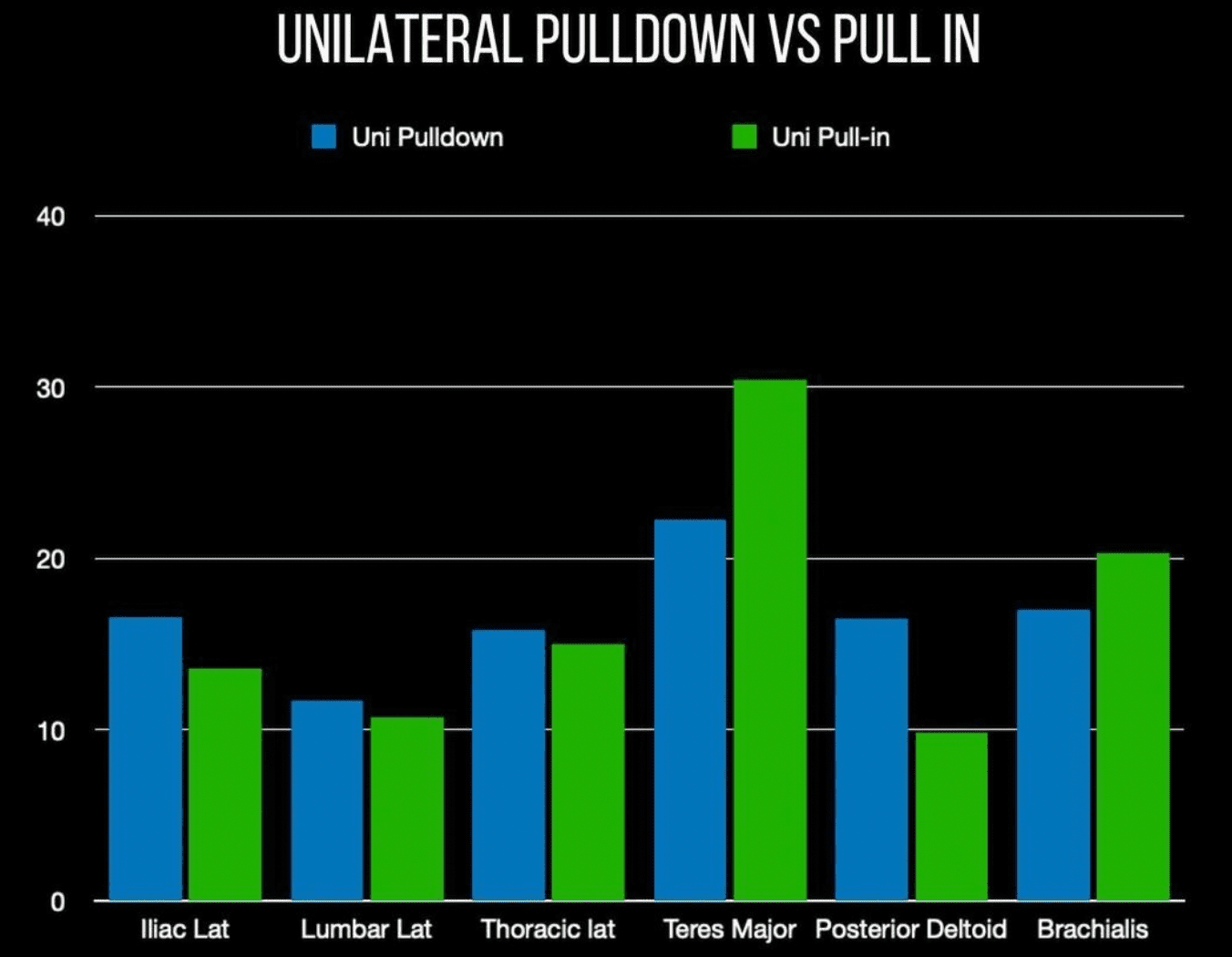
This is the ratio of the raw EMG, so we are looking at how things shift within the same muscles more so than comparing muscles to each other. The trend we see between these two exercises is the the pulldown is more lat and posterior deltoid biased and the pull-in is more teres and brachialis biased in comparison.
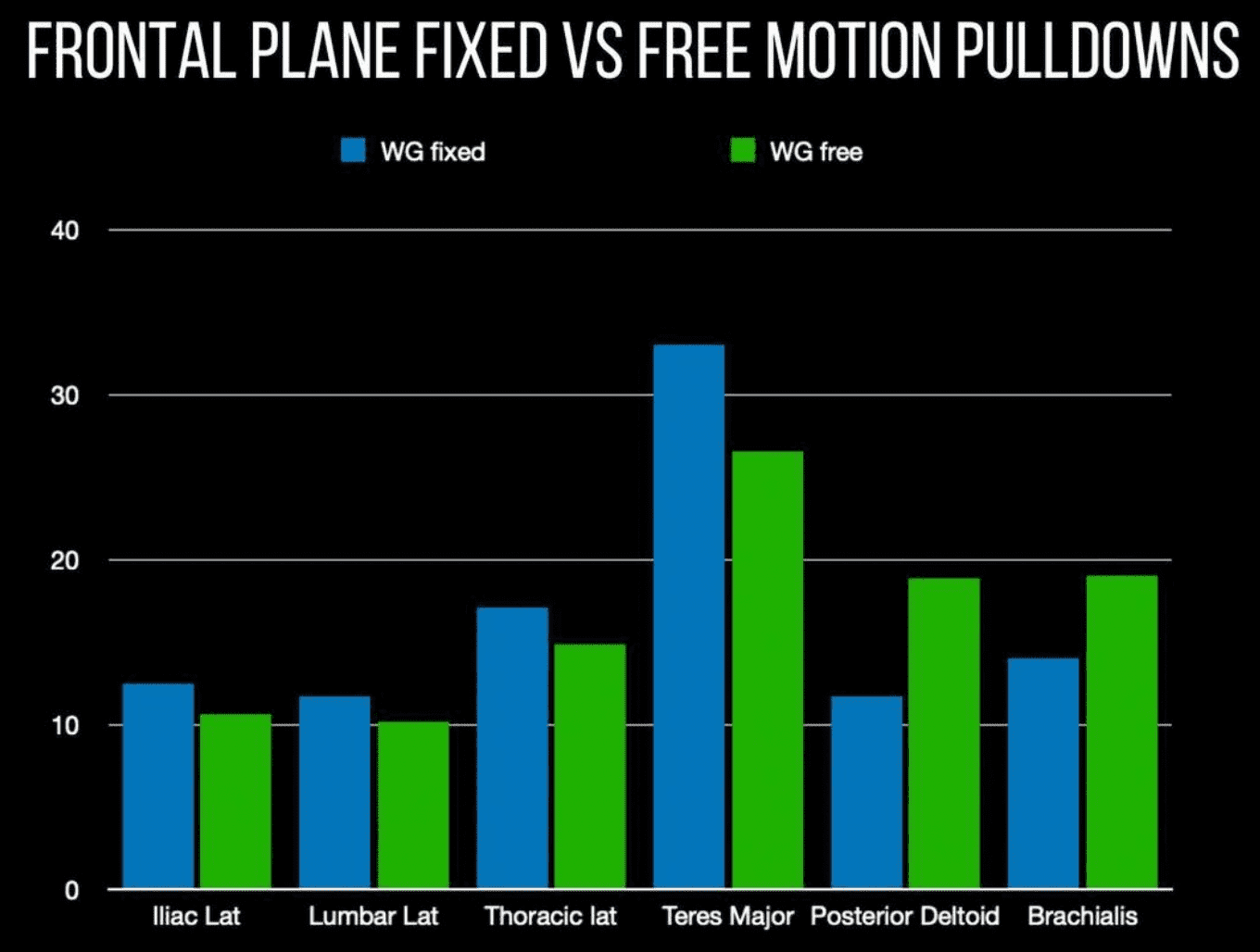
In an earlier post I reviewed a study and mentioned how the limited range of motion of a fixed wide-grip pulldown would likely inflate the mean EMG amplitude for the lats. Here you can see what happens when we use the same arm path, but are not restricted by the fixed grip width. It does indeed result in a relative lower amplitude for the lats in comparison.
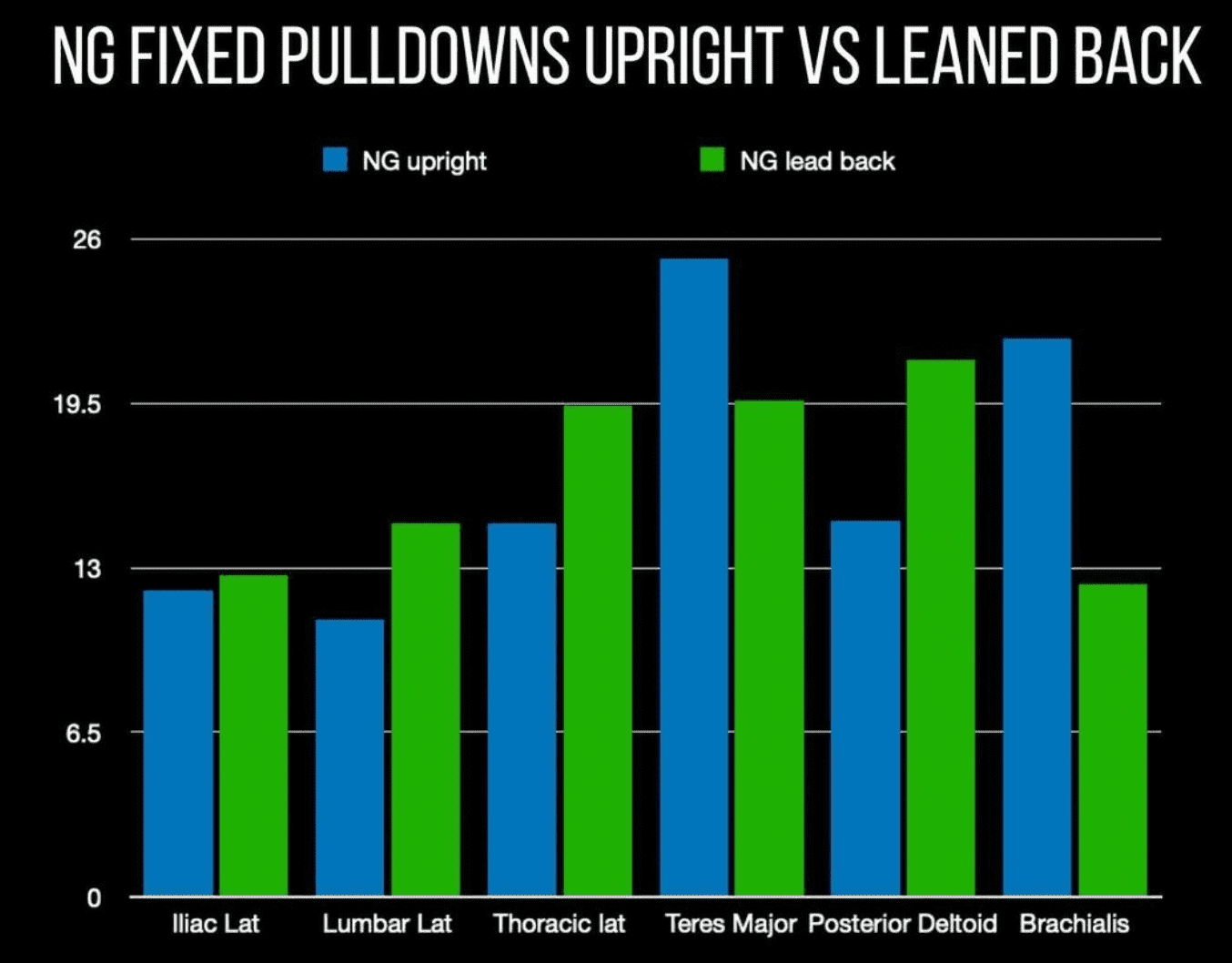
I have also referenced how the neutral grip pulldown in the study would have a greater relative EMG amplitude if the setup was altered to change the ROM and resistance profile. Here you can see that leaning back did result in a relatively higher signal in all three of the lat divisions we measured.
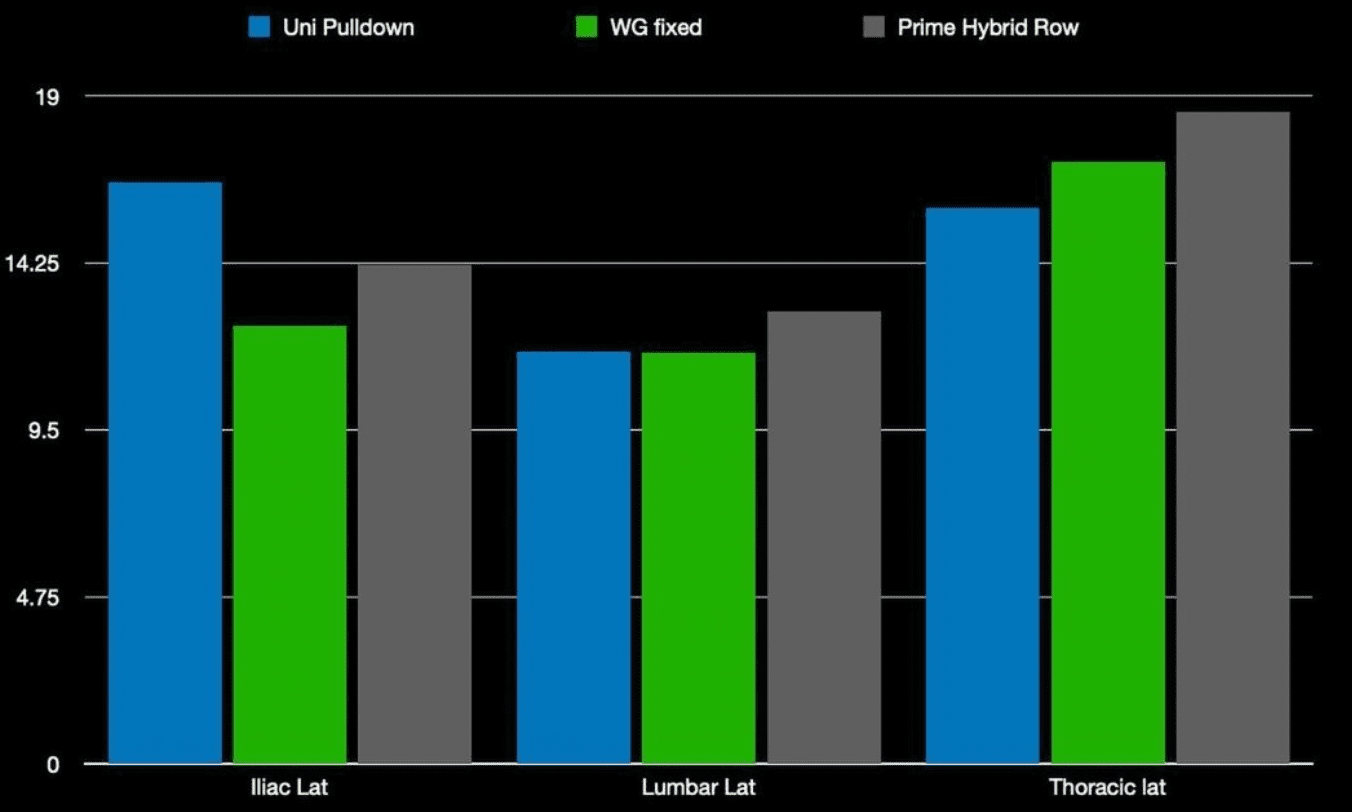
If we compare the unilateral pulldown to the wide grip pulldown, which is the social media debate, you’ll see relative higher iliac lats in the sagittal plane pulldown but more thoracic lat in the wide grip pulldown. However, if you compare the wide grip pulldown to a sagittal plane row, the row had greater relative lat amplitude than the pulldown in all categories but did not beat the unilateral arm pulldown for the iliac lats.
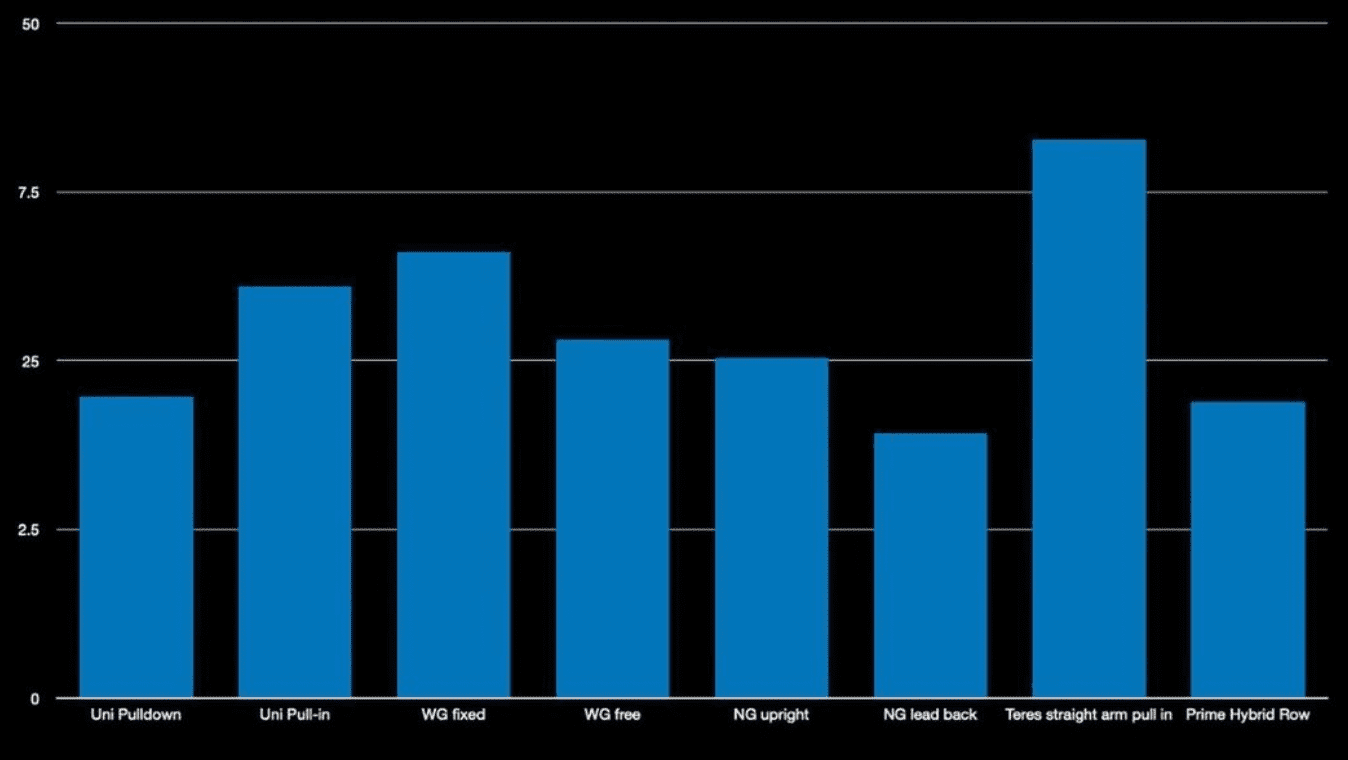
It’s because these amplitudes have not been scaled to an MVC, and the reality is some muscles and places on muscles simply have a larger relative signal. So here is the ratio of the teres recruitment across the exercises mentioned so you can see how they align. No surprise the frontal plane movements have a higher ratio of teres, which is consistent with the published literature as well.

Please log in to access the menu.